#chemical indicators
Explore tagged Tumblr posts
Text

Happy birthday Ray Toro!
#not to be obscene but i would like to give him a firm handshake indicative of my deep respect#my art#ray toro#my chemical romance#mcr#my chem#bullets era#i brought you my bullets you brought me your love#ibymbybmyl#revenge era#three cheers for sweet revenge#three cheers era#black parade era#tbp#the black parade#danger days#danger days era#ttlotfk#jet star#mcr art#mcr fanart
329 notes
·
View notes
Text



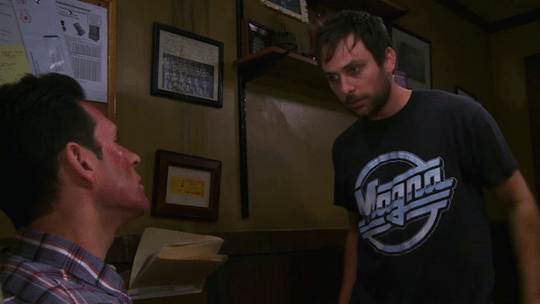
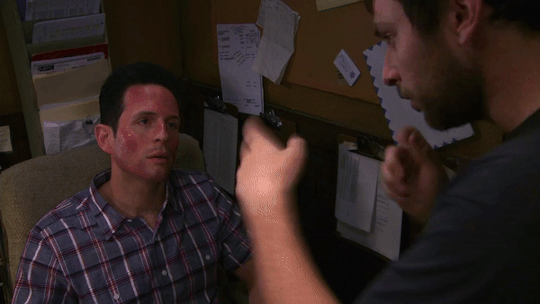

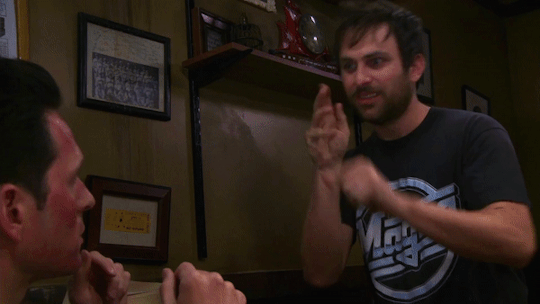


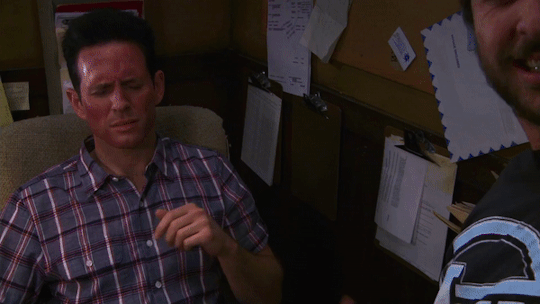




7x10 // How Mac Got Fat
↳ Charlie & Dennis + getting high together
#iasip#it's always sunny in philadelphia#dennis reynolds#charlie kelly#charden#dennis looks....... positively lovestruck#ada's gifs#ada speaks#the continuity errors between shots in these scenes is so funny to me but i only noticed bc ive spent two hours on this gifset#anyway. in my expert opinion#this is far from the first time den's come to charlie like this#i can see this happening frequently in high school especially considering their drug of choice here is inhalants#x2 when know how charlie's relationship with them was in hs#the fact that dennis leaves his room to 'be alone' and then goes to paddy's to get high with charlie#to me indicates he doesn't *want* to be alone with his thoughts like this#when he's already overthinking and self conscious#i think contrasting this scene w mac & dee barging into his room earlier is interesting#because while mac & dee reacted with immediate disgust and asked what the fuck happened to his face#charlie's just like why is your face shiny. then repeatedly makes it clear he doesnt care about anything beyond the basics#ok cool. chemical peel caused it. no i don't want to hear why you decided to get one.#and honestly i think dennis was counting on that reaction. charlie doesn't give a shit. he's down to hang out and he doesn't ask questions.#they both want an immediate out from the pressure they both feel and most definitely do Not want to talk about it <3#stuff it down with some.......... turpentine
494 notes
·
View notes
Text
Meyers-Briggs is out, early 2000s pop-punk is in
(S)imple Plan vs (G)ood Charlotte
(P)aramore vs (F)OB
(A)ll-American Rejects vs (Y)ellowcard
(G)reen Day vs (M)CR
-
Blink-(182) vs Sum (41)
SFAM-182 🫡
#SFAM-182#pop punk#emo#alt#alternative#blink 182#simple plan#fall out boy#fob#mcr#my chemical romance#yellowcard#paramore#good charlotte#all american rejects#green day#sum 41#mbti#meyers briggs#emo type indicator
556 notes
·
View notes
Text
Spending nearly 5 hours on an assignment worth only 2% of a mark normally doesn’t feel great but my grad student mentors said that my rough draft exceeded their expectations and they had no big comments on the final draft and that’s worth soooo much more to my ego than 5 hours teehee.
#I certainly do hope it was that good since basically all I’ve done for this thesis is background research so far lol#like honestly I think they should have set their expectations higher#for how much time I’ve spent just looking at literature this should have been a well put together outline#but still it does feel VERY nice to know that I’ve impressed them#had to brag juuuuust a little while I can lol#if my summer was any indication something is bound to kick my ass soon#so I gotta celebrate the wins while I have ‘em#stemblr#chemical biology#chemistry#stem#chemblr#studyblr#uni student#university#analytical chemistry#atmospheric chemistry
13 notes
·
View notes
Text
thinking about foundations... sick to my fucking stomach. yeah i'm gonna fix my heart and maybe build an alter where it swells. what the fuck
#foundations of decay you are everything to me#mcr#my chem#my chemical romance#foundations of decay#i need to get so delusional about new stuff understand#reasonably i do not think the leaks are indicative of anything happening right now#but maybe eventually if i stay insane enough
24 notes
·
View notes
Text
me before wwwy: it sure would be cool if mcr dropped an album soon
me not 10 minutes after wwwy: i need mcr to drop an album right now and stop playing with my heart
#neon's void#my chemical romance#Mcr: does literally nothing to indicate a new album#me: did you see the wilting flowers? The concept of decay leading to rebirth? The symbolism? Surely they are dropping an album right now#guys I need help I think
7 notes
·
View notes
Text
truly hate to weigh in on discourse but i would love for everyone to practice recognizing when you're making up a guy to get mad at. your life will be so much better. yes this is about every variant of those "mcr fans listen to other artists challenge 🙄" posts and my take is
who cares
every response to these posts that just recommend other bands in the nj hardcore scene or direct cited influences on mcr are also fundamentally flawed because they miss what sets mcr apart from those bands which is their very specific brand of dark campy melodrama that exists across genres
the real reason i'm making this post is to instead share my playlist of recommendations for mcr fans centered around said dark campy melodrama & which is measurably objectively better than any other because more than half of the songs are songs that i or my friends have done drag to which i have decided is the true indicator of mcr adjacency
9 notes
·
View notes
Text
me: this rock is so weird and unique looking, surely it won't be too difficult to identify even for an amateur.
chicken nugget: hold my beer
#enzel.txt#rockposting#I'm back at the suggestion of rhyolite but lol#the wiki page is like 'a lot of the time it has to be ID'd by chemical composition so...GOOD LUCK!'#like I'm 90% sure it's igneous but other than that#the visible crystals indicate intrusive but the porousness indicates extrusive#but apparently rhyolite can sometimes have visible crystals?#I'm at the stage of 'attempt to decipher scientific papers I have neither the experience knowledge or jargon to understand' LMFAO#legit on the verge of taking a geology class here#chicken nugget saga
7 notes
·
View notes
Text
Safranine 0, Safranine Basic Red 2, Manufacturer, Exporter, India
Safranine 0, Safranine Basic Red 2, Safranines, Manufacturers, Supplier, Exporter, Mumbai, India.
Chemical, Chemicals, Electroplating Chemical, Electroplating Chemicals, Lab Chemical, Lab Chemicals, Laboratory Chemical, Laboratory Chemicals, Industrial Chemical, Industrial Chemicals, Safranine, Safranine O, 7 Diamino 2, 8 Dimethyl 5 Phenyl, Phenazinium Chloride, Diethyl Safranine, N Diethyl Phenosafranine, 3 Amino 7 dimethylamino, Basic Violet 5, Basic Violet 8, Thioflavin T, Basic Yellow, Basic Yellow I, O Cresolphthalein, Thymolphthalein, Biological Stain, Biological Stains, PH Indicator, PH Indicators, Lab Reagent, Lab Reagents, Laboratory Reagent, Laboratory Reagents, Dyes & Chemicals, Dye & Chemical, Dyes & Chemicals, Acid Fuchsin, Alizarin Yellow, Alizarin Yellow GG, Alizarin Yellow R, Aurin, Rosolic Acid, p-Rosolic Acid, Azure A, Azure B, Azure 11, Azure 11 Eosinate, Barium Diphenylamine Sulphonate, Basic Fuchsin, Biebrich Scarlet, Brilliant Green, Bromocresol Purple, Bromocresol Purple Sodium Salt, Bromophenol Blue, Bromophenol Blue Sodium Salt, Bromophenol Red, Bromothymol Blue, Bromothymol Blue Sodium Salt, Calcon, Solochrome Dark Blue, Calconcarboxylic Acid, Calmagite, Carbol Fuchsin, Chromotrope 2B, Chromotrope 2R, O Cresolphthalein Complexone, Cresol Red, Cresol Red Sodium Salt, 2:6 Dichlorophenol Indophenol Sodium, 4',5' Dibromofluorescein, Dimethylglyoxime GR, Eosin Blue, Eosin Yellow, Free Acid Eosin Yellow, Water Soluble Eosin Yellow, Eriochrome, Solochrome Black T, Ethyl Orange, Evans Blue, Fluorescein, Fluorescein Complexone, Calcein, Fluorescein Sodium, Giemsa Stain, Hydroxy Naphthol Blue, Indoine Blue, Leishman Stain, May & Grunwald Stain, Methyl Blue, Aniline Blue W/S, Methylene Violet 3Rax, Methyl Orange, Methyl Red, Methylthymol Blue Complexon, Methyl Violet, Naphthol Green B, Naphtholphthalein, 1 Naphtholphthalein, Neutral Red, Orange G, Nitroso R Salt Gr, Indole 3 Acetic Acid, New Fuchsin, asia, asian, india, indian, mumbai, maharashtra, industrial, industries, thane, navi mumbai, pune, nashik, aurangabad, ratnagiri, nagpur, ahmednagar, akola, amravati, chandrapur, dhule, jalgaon, raigad, sangli, satara, belgaum, kolhapur, belgaon.
#Chemical#Chemicals#Electroplating Chemical#Electroplating Chemicals#Lab Chemical#Lab Chemicals#Laboratory Chemical#Laboratory Chemicals#Industrial Chemical#Industrial Chemicals#Safranine#Safranine O#7 Diamino 2#8 Dimethyl 5 Phenyl#Phenazinium Chloride#Diethyl Safranine#N Diethyl Phenosafranine#3 Amino 7 dimethylamino#Basic Violet 5#Basic Violet 8#Thioflavin T#Basic Yellow#Basic Yellow I#O Cresolphthalein#Thymolphthalein#Biological Stain#Biological Stains#PH Indicator#PH Indicators#Lab Reagent
0 notes
Text
Tabletop Laboratory Autoclave 73 kg

Labtron tabletop autoclave is a portable B-class unit with a 35 L capacity, adjustable temperatures of 105–134°C, 0.22 MPa pressure, and 4 stainless steel baskets. Features include automated drying, steam circulation, cold air discharge, and power cut-off with a low water alarm.
0 notes
Text
ASP Sterrad Chemical Indicator Tapes

Chemical Indicator Tapes
ASP Sterrad Chemical Indicator Tapes are designed to secure non-woven sterilization packs and wraps, with an easy-to-read process indicator to differentiate between processed and unprocessed loads in the STERRAD™ Sterilization Systems. They are made with an innovative, highly sensitive ink that changes color when exposed to hydrogen peroxide, giving you confidence that your instruments have been properly sterilized.
The ASP Sterrad Chemical Indicator Tapes are designed to ensure the effectiveness of the sterilization process in healthcare settings. These tapes are essential for monitoring the efficacy of the Sterrad sterilization systems, which use hydrogen peroxide gas plasma technology.
The tapes change color to indicate that the sterilization process has been successfully completed, providing a clear visual confirmation for healthcare professionals. The ASP Sterrad Chemical Indicator Tapes are easy to use and adhere well to various types of sterilization packaging.
Chemical Indicator Tapes Features:
Reliable Sterilization Confirmation: Changes color to indicate successful sterilization, providing clear visual confirmation.
High Adhesion: Strong adhesive backing ensures the tape stays in place during the sterilization process.
Versatile Application: Suitable for use with various sterilization packaging materials.
Easy to Use: Simple application process with clear indicators for effective monitoring.
Non-Toxic: Safe for use in medical environments, non-toxic and non-leaching.
Durable: Designed to withstand the Sterrad sterilization process without degradation.
Additional Information:
The ASP Sterrad Chemical Indicator Tapes are used to indicate the presence of chemicals in a given area. The product comes in two options: the Chemical Indicator Strip and the Sealsure Chemical Indicator Tape. The former is used to detect the presence of chemicals in a given area, while the latter is used to seal containers and prevent the escape of chemicals.
Order now: Chemical Indicator Tapes
0 notes
Text
The Anatomy of Passing Out: When, Why, and How to Write It

Passing out, or syncope, is a loss of consciousness that can play a pivotal role in storytelling, adding drama, suspense, or emotional weight to a scene. Whether it’s due to injury, fear, or exhaustion, the act of fainting can instantly shift the stakes in your story.
But how do you write it convincingly? How do you ensure it’s not overly dramatic or medically inaccurate? In this guide, I’ll walk you through the causes, stages, and aftermath of passing out. By the end, you’ll be able to craft a vivid, realistic fainting scene that enhances your narrative without feeling clichéd or contrived.
2. Common Causes of Passing Out
Characters faint for a variety of reasons, and understanding the common causes can help you decide when and why your character might lose consciousness. Below are the major categories that can lead to fainting, each with their own narrative implications.
Physical Causes
Blood Loss: A sudden drop in blood volume from a wound can cause fainting as the body struggles to maintain circulation and oxygen delivery to the brain.
Dehydration: When the body doesn’t have enough fluids, blood pressure can plummet, leading to dizziness and fainting.
Low Blood Pressure (Hypotension): Characters with chronic low blood pressure may faint after standing up too quickly, due to insufficient blood reaching the brain.
Intense Pain: The body can shut down in response to severe pain, leading to fainting as a protective mechanism.
Heatstroke: Extreme heat can cause the body to overheat, resulting in dehydration and loss of consciousness.
Psychological Causes
Emotional Trauma or Shock: Intense fear, grief, or surprise can trigger a fainting episode, as the brain becomes overwhelmed.
Panic Attacks: The hyperventilation and increased heart rate associated with anxiety attacks can deprive the brain of oxygen, causing a character to faint.
Fear-Induced Fainting (Vasovagal Syncope): This occurs when a character is so afraid that their body’s fight-or-flight response leads to fainting.
Environmental Causes
Lack of Oxygen: Situations like suffocation, high altitudes, or enclosed spaces with poor ventilation can deprive the brain of oxygen and cause fainting.
Poisoning or Toxins: Certain chemicals or gasses (e.g., carbon monoxide) can interfere with the body’s ability to transport oxygen, leading to unconsciousness.
3. The Stages of Passing Out
To write a realistic fainting scene, it’s important to understand the stages of syncope. Fainting is usually a process, and characters will likely experience several key warning signs before they fully lose consciousness.
Pre-Syncope (The Warning Signs)
Before losing consciousness, a character will typically go through a pre-syncope phase. This period can last anywhere from a few seconds to a couple of minutes, and it’s full of physical indicators that something is wrong.
Light-Headedness and Dizziness: A feeling that the world is spinning, which can be exacerbated by movement.
Blurred or Tunnel Vision: The character may notice their vision narrowing or going dark at the edges.
Ringing in the Ears: Often accompanied by a feeling of pressure or muffled hearing.
Weakness in Limbs: The character may feel unsteady, like their legs can’t support them.
Sweating and Nausea: A sudden onset of cold sweats, clamminess, and nausea is common.
Rapid Heartbeat (Tachycardia): The heart races as it tries to maintain blood flow to the brain.
Syncope (The Loss of Consciousness)
When the character faints, the actual loss of consciousness happens quickly, often within seconds of the pre-syncope signs.
The Body Going Limp: The character will crumple to the ground, usually without the ability to break their fall.
Breathing: Breathing continues, but it may be shallow and rapid.
Pulse: While fainting, the heart rate can either slow down dramatically or remain rapid, depending on the cause.
Duration: Most fainting episodes last from a few seconds to a minute or two. Prolonged unconsciousness may indicate a more serious issue.
Post-Syncope (The Recovery)
After a character regains consciousness, they’ll typically feel groggy and disoriented. This phase can last several minutes.
Disorientation: The character may not immediately remember where they are or what happened.
Lingering Dizziness: Standing up too quickly after fainting can trigger another fainting spell.
Nausea and Headache: After waking up, the character might feel sick or develop a headache.
Weakness: Even after regaining consciousness, the body might feel weak or shaky for several hours.
4. The Physical Effects of Fainting
Fainting isn’t just about losing consciousness—there are physical consequences too. Depending on the circumstances, your character may suffer additional injuries from falling, especially if they hit something on the way down.
Impact on the Body
Falling Injuries: When someone faints, they usually drop straight to the ground, often hitting their head or body in the process. Characters may suffer cuts, bruises, or even broken bones.
Head Injuries: Falling and hitting their head on the floor or a nearby object can lead to concussions or more severe trauma.
Scrapes and Bruises: If your character faints on a rough surface or near furniture, they may sustain scrapes, bruises, or other minor injuries.
Physical Vulnerability
Uncontrolled Fall: The character’s body crumples or falls in a heap. Without the ability to brace themselves, they are at risk for further injuries.
Exposed While Unconscious: While fainted, the character is vulnerable to their surroundings. This could lead to danger in the form of attackers, environmental hazards, or secondary injuries from their immediate environment.
Signs to Look For While Unconscious
Shallow Breathing: The character's breathing will typically become shallow or irregular while they’re unconscious.
Pale or Flushed Skin: Depending on the cause of fainting, a character’s skin may become very pale or flushed.
Twitching or Muscle Spasms: In some cases, fainting can be accompanied by brief muscle spasms or jerking movements.
5. Writing Different Types of Fainting
There are different types of fainting, and each can serve a distinct narrative purpose. The way a character faints can help enhance the scene's tension or emotion.
Sudden Collapse
In this case, the character blacks out without any warning. This type of fainting is often caused by sudden physical trauma or exhaustion.
No Warning: The character simply drops, startling both themselves and those around them.
Used in High-Tension Scenes: For example, a character fighting in a battle may suddenly collapse from blood loss, raising the stakes instantly.
Slow and Gradual Fainting
This happens when a character feels themselves fading, usually due to emotional stress or exhaustion.
Internal Monologue: The character might have time to realize something is wrong and reflect on what’s happening before they lose consciousness.
Adds Suspense: The reader is aware that the character is fading but may not know when they’ll drop.
Dramatic Fainting
Some stories call for a more theatrical faint, especially in genres like historical fiction or period dramas.
Exaggerated Swooning: A character might faint from shock or fear, clutching their chest or forehead before collapsing.
Evokes a Specific Tone: This type of fainting works well for dramatic, soap-opera-like scenes where the fainting is part of the tension.
6. Aftermath: How Characters Feel After Waking Up
When your character wakes up from fainting, they’re not going to bounce back immediately. There are often lingering effects that last for minutes—or even hours.
Physical Recovery
Dizziness and Nausea: Characters might feel off-balance or sick to their stomach when they first come around.
Headaches: A headache is a common symptom post-fainting, especially if the character hits their head.
Body Aches: Muscle weakness or stiffness may persist, especially if the character fainted for a long period or in an awkward position.
Emotional and Mental Impact
Confusion: The character may not remember why they fainted or what happened leading up to the event.
Embarrassment: Depending on the situation, fainting can be humiliating, especially if it happened in front of others.
Fear: Characters who faint from emotional shock might be afraid of fainting again or of the situation that caused it.
7. Writing Tips: Making It Believable
Writing a fainting scene can be tricky. If not handled properly, it can come across as melodramatic or unrealistic. Here are some key tips to ensure your fainting scenes are both believable and impactful.
Understand the Cause
First and foremost, ensure that the cause of fainting makes sense in the context of your story. Characters shouldn’t pass out randomly—there should always be a logical reason for it.
Foreshadow the Fainting: If your character is losing blood, suffering from dehydration, or undergoing extreme emotional stress, give subtle clues that they might pass out. Show their discomfort building before they collapse.
Avoid Overuse: Fainting should be reserved for moments of high stakes or significant plot shifts. Using it too often diminishes its impact.
Balance Realism with Drama
While you want your fainting scene to be dramatic, don’t overdo it. Excessively long or theatrical collapses can feel unrealistic.
Keep It Short: Fainting typically happens fast. Avoid dragging the loss of consciousness out for too long, as it can slow down the pacing of your story.
Don’t Always Save the Character in Time: In some cases, let the character hit the ground. This adds realism, especially if they’re fainting due to an injury or traumatic event.
Consider the Aftermath
Make sure to give attention to what happens after the character faints. This part is often overlooked, but it’s important for maintaining realism and continuity.
Lingering Effects: Mention the character’s disorientation, dizziness, or confusion upon waking up. It’s rare for someone to bounce back immediately after fainting.
Reactions of Others: If other characters are present, how do they react? Are they alarmed? Do they rush to help, or are they unsure how to respond?
Avoid Overly Romanticized Fainting
In some genres, fainting is used as a dramatic or romantic plot device, but this can feel outdated and unrealistic. Try to focus on the genuine physical or emotional toll fainting takes on a character.
Stay Away from Clichés: Avoid having your character faint simply to be saved by a love interest. If there’s a romantic element, make sure it’s woven naturally into the plot rather than feeling forced.
8. Common Misconceptions About Fainting
Fainting is often misrepresented in fiction, with exaggerated symptoms or unrealistic recoveries. Here are some common myths about fainting, and the truth behind them.
Myth 1: Fainting Always Comes Without Warning
While some fainting episodes are sudden, most people experience warning signs (lightheadedness, blurred vision) before passing out. This gives the character a chance to notice something is wrong before losing consciousness.
Myth 2: Fainting Is Dramatic and Slow
In reality, fainting happens quickly—usually within a few seconds of the first warning signs. Characters won’t have time for long speeches or dramatic gestures before collapsing.
Myth 3: Characters Instantly Bounce Back
Many stories show characters waking up and being perfectly fine after fainting, but this is rarely the case. Fainting usually leaves people disoriented, weak, or even nauseous for several minutes afterward.
Myth 4: Fainting Is Harmless
In some cases, fainting can indicate a serious medical issue, like heart problems or severe dehydration. If your character is fainting frequently, it should be addressed in the story as a sign of something more severe.
Looking For More Writing Tips And Tricks?
Are you an author looking for writing tips and tricks to better your manuscript? Or do you want to learn about how to get a literary agent, get published and properly market your book? Consider checking out the rest of Quillology with Haya Sameer; a blog dedicated to writing and publishing tips for authors! While you’re at it, don’t forget to head over to my TikTok and Instagram profiles @hayatheauthor to learn more about my WIP and writing journey!
#hayatheauthor#haya's book blog#haya blogs#writing community#quillology with haya#writing tools#writer things#writing advice#writer community#writing techniques#writing prompt#writing stuff#creative writing#ya writing advice#writing tips and tricks#writer tools#writers of tumblr#writer blog#writers block#quillology with haya sameer#writers on tumblr#writerscommunity#writer stuff#author help#author advice#author#writing inspiration#writeblr#novel writing#on writing
6K notes
·
View notes
Text
Chain Reaction News Roundup
Catch up on your weekly round up of business news by listening to the Chain Reaction News Round Up Saturday at Noon Every Week. https://www.buzzsprout.com/1666120/14912987 In The News This Week Our environment is not just an expanse of greenery and oceans; it is a delicate network of ecosystems that sustain life. Unfortunately, a silent crisis is unfolding, one that may not capture headlines…

View On WordPress
#Chain Reaction News Roundup#Clean Water#Downsizing the workforce#Economic Indicators#Forever Chemicals#Industry Giants in Trouble#Pharmaceutical Supply Chains
0 notes
Text
Phenolphthalein is therefore a nearly perfect indicator for the titration of a weak acid by a strong base, where the pH at the equivalence point is on the basic side (figure 11.19).
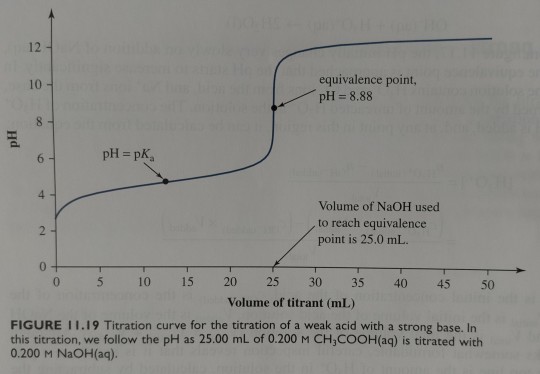
"Chemistry" 2e - Blackman, A., Bottle, S., Schmid, S., Mocerino, M., Wille, U.
#book quote#chemistry#nonfiction#textbook#phenolphthalein#indicator#titration#acid#base#ph#basic#chemical reactions
0 notes
Text

Musical Acts
Kendrick won here, too.
Taylor Swift
Stray Kids +2
BTS -1
My Chemical Romance -1
Kendrick Lamar
Chappell Roan
Ghost
ENHYPEN +7
ATEEZ +2
Megan Thee Stallion +13
SEVENTEEN +1
Drake +74
Joker Out +8
Louis Tomlinson -4
Fall Out Boy -7
The Beatles +23
Sabrina Carpenter +66
Hozier -9
æspa +23
Harry Styles -14
Twenty One Pilots
NCT Dream +9
TWICE -7
Beyoncé +2
Red Velvet +10
One Direction +34
Tomorrow X Together -10
Queen +5
NCT 127 -5
Britney Spears +45
Snoop Dogg +48
Will Wood and the Tapeworms
LOONA +3
Joost Klein
The Mechanisms +13
LE SSERAFIM -2
SHINee -18
BLACKPINK -8
EXO -19
Mitski -2
Rihanna -14
ITZY -2
Miley Cyrus +38
Olivia Rodrigo -15
Ariana Grande +43
Macklemore
WayV +12
IVE +6
Lady Gaga +35
Paramore -22
Niall Horan -1
Dua Lipa -3
Greta Van Fleet -31
Bruce Springsteen
Fiona Apple +23
Boygenius -19
Charli XCX
Billie Eilish
Rammstein +10
The Mountain Goats +7
Astro +2
Elvis Presley -19
Lemon Demon
Green Day
David Bowie
NewJeans
Metallica +23
Madonna
Halsey +30
Guns N' Roses
Michael Jackson
Courtney Love
The 1975 -32
Zayn Malik
Nirvana +18
Gorillaz -2
Phoebe Bridgers -30
Weezer
Muse
Katy Perry
Käärijä -29
(G)-IDLE -2
Nicki Minaj
Tracy Chapman
Tokio Hotel
Nsync
Bob Dylan
Panic At The Disco -75
Stevie Nicks
Dreamcatcher -14
Arctic Monkeys -36
Shawn Mendes
Led Zeppelin +1
Pink Floyd
NCT U +5
Oasis
Dolly Parton -51
Slipknot
The Boyz
Justin Timberlake
The number in italics indicates how many spots a group or name moved up or down from the previous year. Bolded groups or names weren’t on the list last year.
From Sabrina Carpenter to song swaps, there's a Community for every music lover out there. Check 'em out!
2K notes
·
View notes
Text
writing tips - fevers
guys so the injury post absolutely fucking exploded (500 notes in 24 hours is a lot for me) and the fever part really threw yall for a loop.
I didn't go into it but I can! just to clear up questions.
Fevers are funky asf
like, there are so many factors that indicate when a fever is like a big deal and when it's not. part of it has to do with the age of the patient, how long the fever lasts, any causes or prexisting conditions....
Like this:
If person is feverish due to an infection, their symptoms are gonna be slightly different than someone who is fighting the flu. this is because the antibodies are attacking different parts of the nervous system with different kinds of chemicals blah de blah blah blah.
The younger the patient, the more susceptible they are. if the character is a child, a fever of 102 F is way worse than a 30 year old man experiencing that. It'll take a larger toll on the baby's body.
Some people have naturally higher body temps. There is a standard deviation away from the target temp that is still ok. Some people simply exist at 99.2 F, even though for some that's febrile.
idk man it's weird people are weird don't @ me about it.
obviously it's bio science which means not everything has exactly a clear answer. there are so mnay variables at play that it's easier just to blanket statement the whole thing.
because this isn't a blog for medical advice.
please don't use this blog for medical advice.
100% of death.
thanks guys love the effort
xox
#writing advice#writing tips#writing help#how to write#fiction writing#writer#fevers#writing angst#writing injury#injuries#part 2
2K notes
·
View notes